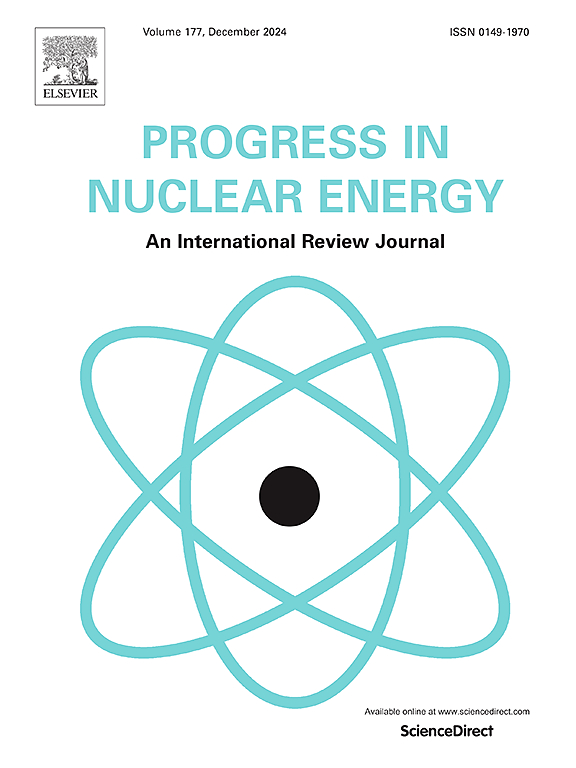Scaling analysis of single-phase natural circulation in deep-pool-type nuclear heating reactors
IF 3.3
3区 工程技术
Q1 NUCLEAR SCIENCE & TECHNOLOGY
引用次数: 0
Abstract
In the deep-pool-type nuclear heating reactor (DHNR), natural circulation within the pool serves as the primary way of removing core residual heat during the late stages of a loss-of-flow accident (LOFA), and its heat transfer performance directly affects the core safety. In this paper, a scaling analysis is conducted for the single-phase natural circulation occurred in DHNR pool, and the similarity criteria are developed for natural circulation loop. Subsequently, three scaled models with different scaling ratios are designed according to similarity criteria. Finally, these three scaled models are preliminarily evaluated by RELAP5 code. The distortion of the local heat transfer in core has little effect on the response characteristics of natural circulation flow between scaled model and prototype. However, this small distortion led to significant discrepancies in the transient response characteristics of the fuel rod cladding temperature of scaled models. The similarity of the axial power distribution characteristics of the heat source compared to the prototype is the key factor in reproducing the axial distribution and response characteristics of the fuel rod cladding temperature in scaled models.
求助全文
约1分钟内获得全文
求助全文
来源期刊

Progress in Nuclear Energy
工程技术-核科学技术
CiteScore
5.30
自引率
14.80%
发文量
331
审稿时长
3.5 months
期刊介绍:
Progress in Nuclear Energy is an international review journal covering all aspects of nuclear science and engineering. In keeping with the maturity of nuclear power, articles on safety, siting and environmental problems are encouraged, as are those associated with economics and fuel management. However, basic physics and engineering will remain an important aspect of the editorial policy. Articles published are either of a review nature or present new material in more depth. They are aimed at researchers and technically-oriented managers working in the nuclear energy field.
Please note the following:
1) PNE seeks high quality research papers which are medium to long in length. Short research papers should be submitted to the journal Annals in Nuclear Energy.
2) PNE reserves the right to reject papers which are based solely on routine application of computer codes used to produce reactor designs or explain existing reactor phenomena. Such papers, although worthy, are best left as laboratory reports whereas Progress in Nuclear Energy seeks papers of originality, which are archival in nature, in the fields of mathematical and experimental nuclear technology, including fission, fusion (blanket physics, radiation damage), safety, materials aspects, economics, etc.
3) Review papers, which may occasionally be invited, are particularly sought by the journal in these fields.
 求助内容:
求助内容: 应助结果提醒方式:
应助结果提醒方式:


